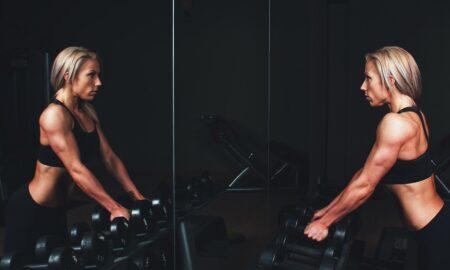Q: I need help with my delts. I can’t get that full, round look to them. Any suggestions?
A: Powerlifters and Olympic lifters have built impressive shoulders using low reps for multiple sets on compound exercises such as presses and upright rows. On the other hand, plenty of bodybuilders out there with fantastic deltoid development have used high reps, short rest intervals and mainly isolation-type movements. I think that people will achieve better deltoid development if they cycle both approaches.
I’ve also found that descending sets and preexhaustion are particularly effective at bringing on shoulder growth. I guess it’s clear by now that I believe you should expose your shoulders to a wide variety of training stimuli. You may want to experiment with low-rep, multiple compound exercises for a short period—around six workouts—and then switch to higher-rep, isolation-type exercises for an equally short phase.
Here’s a sample routine you may want to try. It employs high-volume and shifting-torque curves:
• One-arm lateral raises, 6-8 reps, 3/0/2/1 tempo
Rest 10 seconds
• Incline one-arm lateral raises, 10-12 reps, 3/0/1/0
Rest 10 seconds
• One-arm cable lateral raises, 12-15 reps, 2/0/1/0
Cry out in pain, and curse the gods; then repeat with the other arm. Rest two minutes after you’ve completed rounds for both arms. Then do the entire tri-set again. Do a total of three tri-sets for each arm.
Q: I hear how great lunges are for legs, but when I do them, only my glutes get sore. That’s fine by me, but shouldn’t I be feeling something in my quads? I usually start my program with lunges, since they require more balance, and then move on to hamstring curls and calves.
A: If performed properly, lunges should make not only your glutes sore but also your hamstrings, quads and adductors. If you’re getting soreness only in your glutes, your lunge technique is on the wussy side—most likely your stride is too short and you lean forward too far.
In the stretched position, the bottom six inches of your hamstrings should fully cover your calf muscles. In other words, in the stretched position you should see no daylight between the hamstrings and calf. Your torso should be as upright as possible; in fact, it should be perpendicular to the ground.
Give the proper technique a try and see if you can walk upstairs tomorrow without cursing me and my descendants. I can guarantee, though, that if you do them the way I’ve described, your leg hypertrophy should shoot right up.
Q: My wrists hurt when I do upright rows. Is there some way I can do the exercise without pain?
A: There are three things you can do to alleviate the stress on your wrists when doing upright rows:
1) Use an EZ-curl bar and grip it where you would normally put your hands for curls; the angle on the bar will permit pain-free movement.
2) Use a rope with bulky rubber ends—the one normally used for triceps pushdowns.
3) If you use a conventional barbell, don’t lift the bar past your clavicle.
Editor’s note: Charles Poliquin is recognized as one of the world’s most successful strength coaches, having coached Olympic medalists in 12 different sports, including the U.S. women’s track-and-field team for the 2000 Olympics. He’s spent years researching European journals (he’s fluent in English, French and German) and speaking with other coaches and scientists in his quest to optimize training methods. For more on his books, seminars and methods, visit www.CharlesPoliquin.net. IM




















You must be logged in to post a comment Login